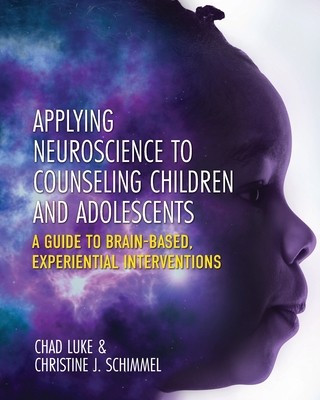
- We will send in 10–14 business days.
- Author: Chad Luke
- Publisher: Cognella Academic Publishing
- ISBN-10: 1793518300
- ISBN-13: 9781793518309
- Format: 20.3 x 25.4 x 1.5 cm, softcover
- Language: English
- SAVE -10% with code: EXTRA
Applying Neuroscience to Counseling Children and Adolescents (e-book) (used book) | bookbook.eu
Reviews
Description
Applying Neuroscience to Counseling Children and Adolescents: A Guide to Brain-Based, Experiential Interventions explores the neurobiological underpinnings of child and adolescent development and encourages readers to apply neuroscience-informed interventions and strategies to counseling practice.
The book provides an overview and foundational perspective on neuroscience-informed child and adolescent counseling; covers models and modes of counseling from a neuroscience perspective; and examines common clinical presentations when working with children and adolescents. Individual chapters address ethical and cultural considerations, counseling theory and neuroscience, neuroscience of play, using neuroscience in working with parents and caregivers, and neuroscience-informed interventions to treat anxiety, depression, stress, trauma, substance misuse, and attention and behavioral issues.
Each chapter features two primary cases, one for a young child and one for an adolescent, conceptualized from real-life clients. The chapters present practical interventions and a sample of counselor-client dialogue to help readers understand how an intervention might unfold during a session.
Applying Neuroscience to Counseling Children and Adolescents bridges the gap between textbooks that cover neuroscience and counseling children and adolescents independently. It is an ideal supplemental text for courses on incorporating neuroscience in counseling.
EXTRA 10 % discount with code: EXTRA
The promotion ends in 19d.11:54:02
The discount code is valid when purchasing from 10 €. Discounts do not stack.
- Author: Chad Luke
- Publisher: Cognella Academic Publishing
- ISBN-10: 1793518300
- ISBN-13: 9781793518309
- Format: 20.3 x 25.4 x 1.5 cm, softcover
- Language: English English
Applying Neuroscience to Counseling Children and Adolescents: A Guide to Brain-Based, Experiential Interventions explores the neurobiological underpinnings of child and adolescent development and encourages readers to apply neuroscience-informed interventions and strategies to counseling practice.
The book provides an overview and foundational perspective on neuroscience-informed child and adolescent counseling; covers models and modes of counseling from a neuroscience perspective; and examines common clinical presentations when working with children and adolescents. Individual chapters address ethical and cultural considerations, counseling theory and neuroscience, neuroscience of play, using neuroscience in working with parents and caregivers, and neuroscience-informed interventions to treat anxiety, depression, stress, trauma, substance misuse, and attention and behavioral issues.
Each chapter features two primary cases, one for a young child and one for an adolescent, conceptualized from real-life clients. The chapters present practical interventions and a sample of counselor-client dialogue to help readers understand how an intervention might unfold during a session.
Applying Neuroscience to Counseling Children and Adolescents bridges the gap between textbooks that cover neuroscience and counseling children and adolescents independently. It is an ideal supplemental text for courses on incorporating neuroscience in counseling.


Reviews